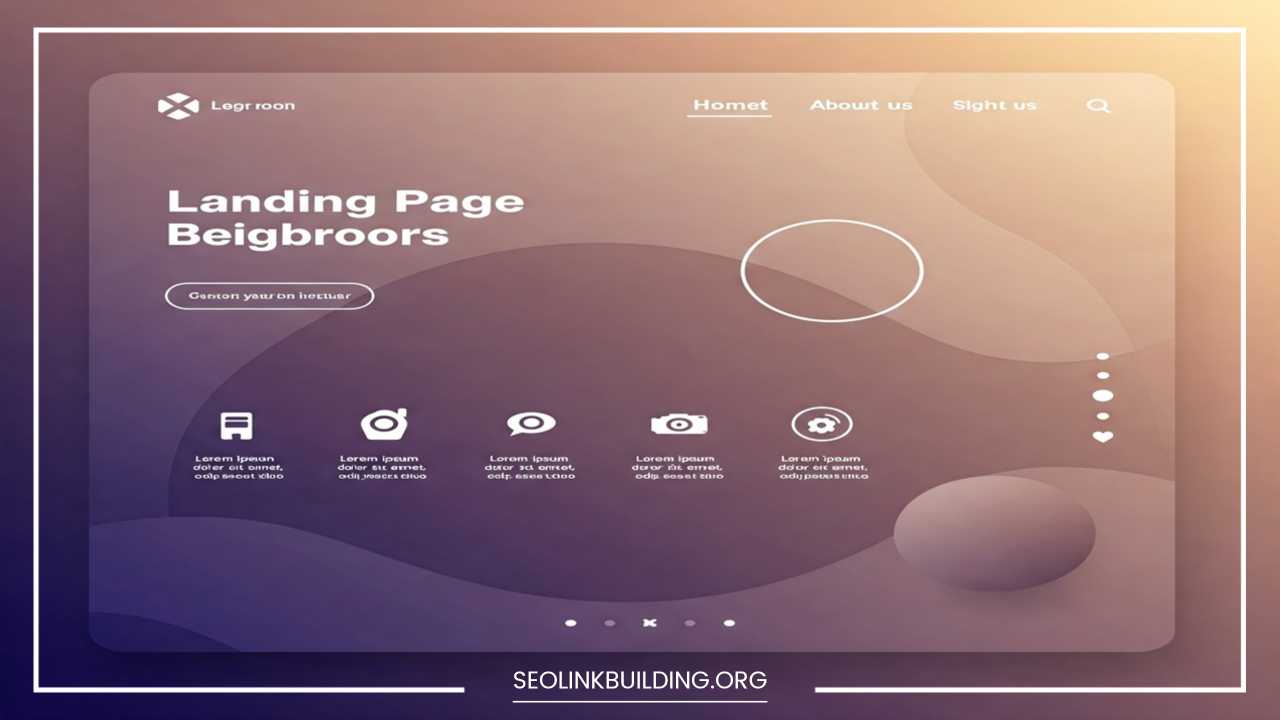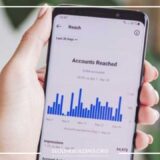How to Create & Optimize Landing Pages for SEO

SEO Landing Page
Optimizing Landing Pages for SEO
Landing pages are essential components of any successful online marketing strategy. They act as focused, standalone web pages created to drive a specific action from visitors, such as capturing leads or driving sales.
A well-designed and optimized landing page can dramatically increase conversion rates while simultaneously improving SEO performance.
This comprehensive guide provides an in-depth look at how to create and optimize landing pages for SEO, exploring key elements, optimization strategies, and best practices.
What is a Landing Page?
A landing page is a web page built with a specific purpose in mind, typically created as part of a targeted marketing campaign.
When a visitor clicks on a link from an ad, email, or search engine result, they are directed to this page.
Unlike general website pages, which provide a broad array of information about a company or brand, landing pages have one singular goal: to convert visitors into leads or customers.
They do so by offering a specific product, service, or offer and eliminating distractions. The simplicity of a landing page’s structure and messaging ensures that visitors are guided toward completing the desired action, such as filling out a form, making a purchase, or downloading content.
Why are Landing Pages Important for SEO?
While landing pages themselves do not directly influence search engine rankings, they are critical to overall SEO success. A high-performing landing page plays an essential role in the following aspects of SEO:
1. Improving Quality Score in Paid Campaigns
Google Ads and other pay-per-click (PPC) campaigns rely heavily on a metric called Quality Score. This score is an assessment of the relevance and quality of your ads and landing pages.
If your landing page aligns closely with the ad copy, keyword intent, and searcher expectations, your Quality Score will improve.
A higher Quality Score can result in lower cost-per-click (CPC) and better ad positioning, indirectly impacting your organic visibility.
Although this is a factor for paid campaigns, it also influences overall site relevance, indirectly affecting your SEO strategy.
2. Increasing Conversion Rates
Landing pages can drive better conversion rates by aligning closely with user intent. By focusing on a specific keyword, product, or service, the landing page delivers exactly what the visitor is looking for, making it easier for them to convert.
Conversion rate optimization (CRO) is essential in SEO, as higher conversion rates signal relevance and user satisfaction to search engines, potentially affecting rankings.
Essentially, when users interact positively with your page—whether by filling out forms, downloading content, or making a purchase—search engines take it as a sign that your content is valuable.
3. Enhancing Relevance and Context
Landing pages allow for precise targeting of keywords and user intent. When optimizing a landing page for a specific product or service, you are effectively honing in on what the user is seeking, making your content more relevant in the eyes of search engines.
For example, if your landing page is focused on selling a particular service, and the keyword used aligns directly with the user’s search intent, the page becomes highly relevant. This helps establish strong contextual relevance for your website in general.
4. Data Collection and Analysis
Landing pages provide valuable data that can be used to optimize both user experience (UX) and SEO performance.
Analyzing landing page metrics—such as bounce rate, time on page, and conversion rates—allows you to understand user behavior and identify opportunities for improvement.
For instance, if you notice that users frequently leave the page without converting, you may need to rethink the page’s design, copy, or CTA.
These insights can help inform your broader SEO strategy and ensure that all pages on your site are aligned with user preferences.
Key Elements of a High-Converting Landing Page
To ensure that your landing page is both effective and optimized for SEO, it’s essential to include several key elements that guide users toward a conversion.
1. Compelling Headline
The headline is one of the most important elements of a landing page. It is the first thing a visitor will see, and it must immediately capture their attention.
A strong headline should clearly communicate the value proposition and reflect the visitor’s search intent.
The headline should align with the ad copy or search query that brought the visitor to the page. Make it concise and compelling.
Use power words and action-driven language that encourages the visitor to stay on the page and explore further.
2. Clear and Persuasive Copy
The body copy should be focused on the visitor’s needs and how your offer solves their problems. Write in a conversational and benefit-driven tone, ensuring that the text is easy to read and understand.
Avoid overly technical language, jargon, or fluff. The goal is to help visitors quickly grasp the value of your offer and encourage them to take action.
It’s also important to highlight the benefits, not just the features of your product or service. For example, instead of saying “Our product has X feature,” frame it as “Our product helps you achieve Y result.”
3. Visually Appealing Design
Design plays a crucial role in conversion optimization. A cluttered, disorganized page can overwhelm visitors and lead them to abandon the page before taking action.
Use a clean, professional layout with high-quality images and videos that enhance your message and engage users.
Visual hierarchy is also important—ensure that key elements, such as the CTA button, headline, and offer details, stand out.
Additionally, ensure that the page is fully responsive and performs well on mobile devices. With the majority of web traffic now coming from mobile, a mobile-optimized landing page is essential for SEO.
4. Strong Call to Action (CTA)
The CTA is the most critical element of any landing page. It tells visitors exactly what you want them to do, whether it’s signing up for a newsletter, downloading a resource, or making a purchase.
The CTA should be placed prominently on the page and use action-oriented language. Phrases like “Get Started Now,” “Download Free Ebook,” or “Claim Your Offer” can instill urgency and motivate visitors to take immediate action. Make the CTA button stand out with contrasting colors and a size that’s easy to spot.
5. Social Proof
Social proof can significantly increase the credibility of your landing page and encourage visitors to trust your offer. T
estimonials, reviews, user-generated content, and case studies are powerful ways to show potential customers that others have had positive experiences with your product or service.
Adding trust signals, such as security badges, industry certifications, or customer logos, can also help instill confidence in your brand.
6. Minimal Navigation
A common mistake in landing page design is including excessive navigation. Landing pages should be distraction-free to keep visitors focused on the CTA.
Avoid unnecessary menus or links that might lead visitors away from the page. By minimizing navigation, you create a seamless, uninterrupted path to conversion.
7. Fast Loading Speed
Page speed is a crucial factor for both user experience and SEO. Slow-loading landing pages can frustrate visitors and lead to high bounce rates, which negatively affect your conversions and rankings.
Optimize your images, reduce HTTP requests, leverage browser caching, and use content delivery networks (CDNs) to ensure that your landing page loads as quickly as possible.
8. Thank You Page
After a visitor completes the desired action, redirect them to a thank you page. This not only confirms that the conversion was successful but also provides an opportunity to continue engagement with the user.
You can use the thank you page to upsell other products, offer exclusive deals, or ask for social shares or referrals.
Optimizing Landing Pages for SEO
Once you’ve built a high-converting landing page, it’s time to optimize it for search engines. SEO is crucial to ensure that your landing page is discoverable by your target audience.
1. Keyword Research
Effective SEO begins with thorough keyword research. Identify the keywords your target audience is searching for and ensure they are integrated into your landing page content.
The goal is to target specific long-tail keywords that match user intent and align with the offer on your landing page. Use keyword research tools such as Google Keyword Planner, Ahrefs, or SEMrush to find the right keywords.
2. On-Page SEO Elements
To optimize your landing page for SEO, focus on the following on-page elements:
- Title Tag: The title tag is one of the most important SEO elements for your landing page. Include the primary keyword in the title and make it compelling and concise. Ideally, the title should be under 60 characters to ensure it displays correctly in search results.
- Meta Description: Write a meta description that accurately reflects the content of your landing page and encourages clicks. While meta descriptions don’t directly impact rankings, they can affect click-through rates (CTR), which, in turn, influences SEO performance. Keep the description under 160 characters and include your target keyword.
- Header Tags (H1-H6): Use header tags to structure the content of your landing page. The H1 tag should contain your primary keyword and reflect the page’s main topic. Use H2, H3, etc., to organize the content and make it easier for both users and search engines to digest.
- URL Structure: A clear and concise URL structure is crucial for SEO. Include your target keyword in the URL and avoid using long strings of numbers or irrelevant characters. For example, “example.com/free-guide” is much better than “example.com/landing-page-12345.”
- Image Alt Text: Adding alt text to images helps search engines understand the content of your visual elements. Use descriptive alt text that includes your target keywords when applicable.
- Content Optimization: Ensure that the content on your landing page is well-written, relevant, and provides value to the visitor. Avoid keyword stuffing and focus on creating natural, user-friendly content that answers the visitor’s questions or solves their problems.
3. Mobile Optimization
With mobile search accounting for a significant portion of web traffic, mobile optimization is crucial for SEO.
Ensure that your landing page is fully responsive, meaning it adapts to different screen sizes and offers a smooth user experience on smartphones and tablets.
Google’s mobile-first indexing means that mobile-friendliness can directly impact search rankings.
4. Page Speed Optimization
Page load time is an important ranking factor for Google. A slow-loading landing page can harm both your user experience and SEO performance.
Use tools like Google PageSpeed Insights to test your landing page speed and receive recommendations for improvements. Compress images, reduce server requests, and enable caching to speed up your page.
5. Internal Linking
Link to your landing page from other relevant pages within your website. This helps boost the visibility and authority of your landing page and helps search engines discover it faster.
Be strategic about your internal linking structure to improve the overall SEO of your website.
6. External Backlinks
While not as important for landing pages as they are for regular blog content or product pages, high-quality backlinks can still provide SEO benefits.
If you can acquire backlinks from authoritative websites, it can improve the domain authority of your landing page, thus enhancing its search engine rankings.
7. Schema Markup
Adding schema markup to your landing page helps search engines understand the content more accurately. Schema markup can be used to display rich snippets in search results, which can improve visibility and CTR.
For example, if you’re offering a product or a service, using schema can display pricing, reviews, or availability directly in the search results.
8. A/B Testing
Regular A/B testing is essential to optimizing the effectiveness of your landing pages. Test different elements like headlines, CTAs, images, and copy to determine which versions lead to better conversion rates.
Continuously monitor the results of these tests to refine your landing page for both UX and SEO.
9. Analytics Tracking
Tracking the performance of your landing pages using tools like Google Analytics is crucial for long-term optimization.
Monitor key metrics such as bounce rates, time on page, conversions, and traffic sources. These insights will help you identify areas for improvement and refine your strategy over time.
Landing Page Best Practices
To ensure that your landing pages are fully optimized for conversions and SEO, adhere to these best practices:
- Keep It Simple: Avoid clutter on your landing page. Focus on the core message and the specific offer, and make it easy for visitors to take action.
- Be Clear and Concise: Use clear, concise language that is easy to understand. Visitors should instantly understand what’s being offered and how it benefits them.
- Focus on Benefits: Emphasize the value of your offer, highlighting the benefits it provides to the visitor. Show how your product or service solves a problem or improves their life.
- Build Trust: Use testimonials, case studies, and social proof to establish credibility and trust. Trust is a critical factor in conversion optimization.
- Create Urgency: Encourage immediate action by using limited-time offers, countdowns, or scarcity tactics like “Only a few spots left.”
- Test and Iterate: Continuously test different elements of your landing pages. Implement new strategies based on the results of these tests and make iterative improvements to boost performance.
Final Thoughts
Landing pages are essential for any online marketing campaign, and when optimized correctly, they can significantly boost both conversions and SEO performance.
By focusing on clear messaging, strong calls to action, and a user-friendly experience, you can create landing pages that not only capture leads but also enhance your site’s visibility in search results.
Remember, SEO is an ongoing process, and continuous testing and optimization are key to maintaining the effectiveness of your landing pages.
By implementing the strategies outlined in this guide, you can create landing pages that become powerful tools in driving both traffic and conversions.













